Involved Parties
Parties involved
The author assembled a large team of sinologists, artists, writers and others to participate in this life-work.
His wish to involve a rainbow of people in the production is fulfilled in this work:
from very distinguished to humble, from professor to dustman, from wise to mad, from old to young, from square to round.
A part of the arsenal of texts is borrowed from world literature. Many are from the Bible which according to me is the largest treasure trove of textual imagery that there is.
Others have been especially prepared by a team of writers from home and abroad.
An extensive group of artists have worked on this: full professionals, semi professionals, amateurs, mentally handicapped, children, who have used all sorts of techniques. This also makes the book colourful and lively in a pictural sense. China-Y is a must have for Chinese art book lovers!
A selection of the artists and writers
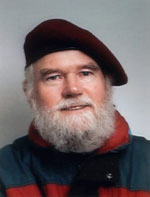 |
AD BEENACKERS As a psychologist he has published five books with Eburon publishers in Delft and more than thirty articles in scientific magazines. His dissertation was crowned with a special prize, created by the department of National Health. Apart from his scientific work he regularly publishes poetry in literary magazines. Recently, ‘Oude Emmer, verhoor mijn gebed’ was published by IJzer in Utrecht: a book with 150 poetry reviews in which 500 of the best short poems of the world are featured. |
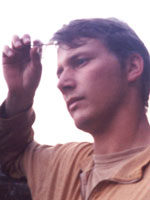 |
SIEBE ELING BOERSMA Followed teacher’s training for drawing and works currently as archeological illustrator at the University of Groningen. He is very captivated by native art and handicraft, especially African carving. His work is chiefly figurative, in warm, natural colours. For more information, see the website www.eling.nl |
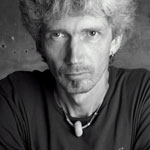 |
JAN BOUMA Dear Hans, we worked together for many years in drab and better times (the exhibition in Franker, illustrating, coaching). My sculpture, ‘My love’, is shining on the cover of your book; it is a great honour. This book, your project, is uncommon and I hope it will be a succes all over the world. I wish you all the best. |
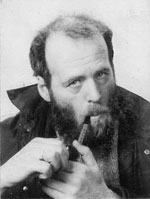 |
YDE BOUMA (1957) Born in Winaam, Friesland, as son of a dike builder turned (small) dairy farmer, he began a study as ships officer, after a lot of difficulties, but had to abandon that through problems in his home situation. In 1984 he started writing at a pace of at least a thousand words a day, but has published very little until now. Perhaps after this book is published, (some of) his other works will see the light of day. |
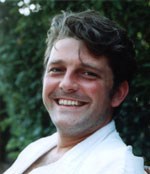 |
ALRIC VAN DEN BROEK – the author’s son – has a masters degree in comparative Indo-European linguistics and he specialized in Anatolian (Hittite) languages at the University of Leiden in Holland. His thesis dealt with poetry in Lycian B. He is currently a freelance translator and text writer and has written a huge amount of lyrics and poems in both English and Dutch. A selection of these poems can be found in ‘Gat in het asfalt’ (Crack in the asphalt), ‘Hof van de leeuw’ (This lion’s garden) and ‘Toorts’ (a Torch). |
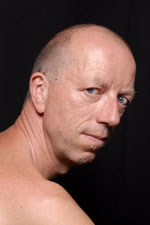 |
RUUD BROESE (1954, Schiedam) Former townplanner, skipper and shipbroker, is fascinated by man, the body, machine, landscape and the city. He lives on a houseboat in Franeker and as a photographer works free and on commission from his studio and on location. For this project erotically tinted work has been selected. His pictures are not longing to the past, future or another reality, but they express his interest in the Omnipresence. With an eye for detail, structure and lines, man and his surroundings are shown in their naked truth, their vulnerability. Growth and decay. The always changing shape of Being. |
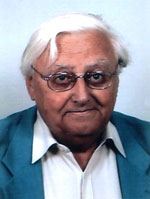 |
KLAAS BRUINSMA (NICHOLAS EASTEND) (1931) has taught English literature and history and translated classics into Frisian: A. Dutch literature, medieval and modern, 6 works; Old English poetry and Middle English Poetry (Hear Gawain en de griene ridder); Chaucer’s Canterbury Tales (unfinished); Spanish poetry, classical and modern (Pablo Neruda, Octavio Paz) and drama (F. Garcia Lorca); from Latin: Virgil’s Georgiacs and Ovid’s Metamorphosis; from Greek: Homer’s Illiad and Odysseya, the tragedies of Aeschylus, Sophocles and Euripides, the comedies of Aristophanes, and Greek poetry. B. Historical works: from Latin hagiaographics and from French Stephane Lebeq’s book. He was twice awarded the dr. Obe Postma-prize for translations. He has also made modern versions of the poetry and prose of the Frisian poet Gysbert Japiks (17th c.), and translated three parts of the Fries Stamboek (500 years of Frisian prose) into Dutch. |
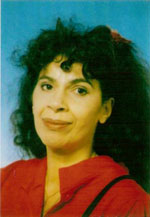 |
MURIELLE LUCIE CLÉMENT She has a PhD in literature and has published the following poetry albums: Le Nagal; Les Nuits sibériennes; L’Arc-en-ciel; Sur un rayon d’amour and other books; Houellebecq, Sperme et sang; Baudelaire et la Musique; Mongolie-Mandchourie-Sibérie; Sibérie, entretiens au quotidien; Murielle en Mongolie; Murielle et René en Sibérie; Les Héroïnes de l’Opéra. She has also composed operas: Sketches of Chess; Les Soleils immobiles; Aliénor, un opéra exposé; L’Odyssée de la Lumière et du Temps; Chants pour un tressaillement d’Olivier; La Cantilène des Saints contemporains. As a classical vocalist she has recorded several cd’s. |
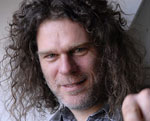 |
GERRIT CNOSSEN With my agrarian background it is perhaps logical that my creations in their style have a blossoming and decaying development. Underground root systems surface increasingly quieter and abstract… until they are almost dissolved, harvested into the light and (therefore) wanting to be ploughed in again… in order to come to light as turned around, as ‘weeds’ or as realistic/grotesque theatre. How The Sun (the artist) recognizes her own colours (creations) can be seen in her many sublunary, blossoming (descriptive) expressions. |
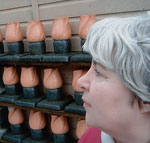 |
INEKE EKKERS Her contribution to this book consists of pictures of sculptures made between 1992 and 2006. Her sculptures are not specifically made to fit the content of this book, but proved to be highly fitting because of their archetypical and timeless imagery. An important source of inspiration in her work is the manifestation of life processes and the struggle for life in nature which, since we are all part of it, happens to be very similar to the human struggle to live and survive. She graduated from the R. A. of Fine Arts (cum laude) in The Hague, The Netherlands, achieved an M.A. in Psychology and became a stonemason. Her approach to her work is philosophical, often ironical and playful. She lives and works withdrawn, outside a small village in Friesland, but since everything is everywhere anyway, there is no real need to travel far for inspiration: it’s all there. |
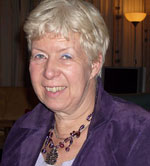 |
KLASKE HIEMSTRA After grammar school I went to university to study Dutch literature. Frisian literature was my minor subject. For six years I was a teacher, but gradually I realized that this was not the way I wanted to live. I had two children and raised them, and very, very steadily but surely literature came into my head and my pen. To date, some poems (‘De Skaadfrou’), two novels (‘Retour Skylge’ and ‘It rinnen fan Silke’) and some articles have been published in Frisian. I am now preparing a small book about religion (Dutch) and a Frisian fairytale. |
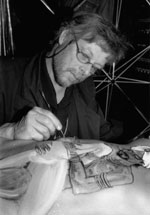 |
HANS HILBRANDS (1943, Hamburg) Teacher of drawing and art history, architectonic adviser, designer and illustrator, body painter for the HILBRAN GROUP. Works in that capacity for exhibitions, art and motor shows, street theatres, tattoo festivals, activities in clubs and disco’s, for leaflets, calendars, birth announcements and menu cards.The models Lyda, Sandra and Petra, that appear in this book, have been his assistants for many years. His work can be recognized by the firm graphical contours and the frequent use of metallic colours, and has appeared several times in the media. In the Netherlands on such TV stations as Veronica, SBS6 and TV Drenthe, in Germany on ZDF, RTL-West and Sender Freies Berlin. Photographs have appeared in Actueel, Penthouse and Passion, motor and tattoo magazines and furthermore in nearly all the national newspapers |
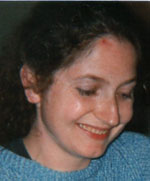 |
JUDITH KAMERBEEK She met Hans aboard the ‘Gracière’, an old Galyas, in the early nineteen eighties. It clicked and she offered to help with the illustrative part of the book. She painted his house as well and taught his children while he made the sangria and did the cooking. We had long talks and tried to solve the world problems. We never agreed on the nature of God although later she admitted that Grace is capable of transforming DNA configurations (She works in genomics in Wageningen). |
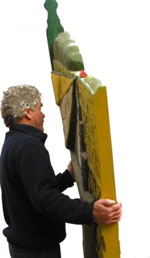 |
DAVID VAN KAMPEN (1939) Since 2006 he lives and works with his wife Janny on a renovated ship, a ‘peniche’. In previous years he has worked on assignments for the State and local councils, using mostly natural stone and the designs of fishermen, traders, a gardener, a mole catcher, etc. The designs of his own work include city landscapes and oppressed people. The tension between the 2nd and 3rd dimension on linen, card or wood as base have become a style of working with oil and acrylic paint as the painter’s material. |
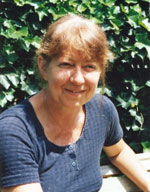 |
MIEKE KOENEN (1952) portrays people. Naked people, like you and me – in all our vulnerability. Clumsy and inadequate we are placed on view, stark naked. This makes her pictures not always easy to look at – they are not made to give simple pleasure. But to those who dare to look though, they show also something else: Koenen’s people are genuine, sincere and touching. Despite our clumsiness, we are there, time and again… Maybe in doubt and mostly timid, nevertheless brave and persistent. In this way she shows us also our greatness – íf we have the courage to look beneath the surface… |
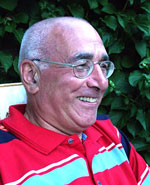 |
JAN KOK Two sisters, Emmy and Leny, both had, amongst others, a son later in life, the one I shall call Hans and the other Jan. What has bound the boys the deepest since birth is the presence of their mother’s love. This has manifested itself in their being grasped by a life ambition and for me that can be seen in my pointed textual contributions for Hans. This is for me the essence upon which China-Y is founded: the same love also binds deeply all those interested in it: interest (inter-essence) in each other! Sukkuhtuvvuh. Cousin Jan |
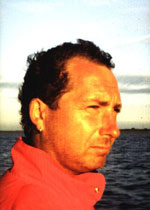 |
AD VAN DE KOLK I was kindly invited by Hans to participate in this project, something he has dedicated himself to for years. I really admire him for that, it’s truly a huge achieve-ment. I consider myself to be a musician, composer, songwriter, poet and last but not least a politician. The latter I also find a bit awkward to comprehend but it provides me with lots of inspiration. I guess my poetry is simple and straight, that seems to be the way it goes for me. What comes from my heart reaches the paper, what comes from my mind stays behind. I write fast when inspiration suddenly appears. Hurry, before she vanishes again. And so my poetry is not so much of a designed kind. I leave that to others. I do hope the reader will find comfort in my scribblings or be made to think a bit besides learning the language. |
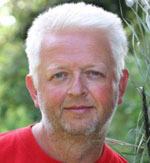 |
JURJEN VAN DER MEER (1957) Born in Skearnegoutum he has lived all his life in Terkaple-Eachmaryp. At the P.A. (teachers training college) he started to send in contributions to the Lyrische Courant of the Leeuwarder Courant and often gained a prize for his poems. He has published two volumes of poetry: Yn ‘e fierte 1986 (poetry for grown ups) and Freedtemiddei Frij 1996 (poetry for children). In recent times he has applied his skills to songwriting. He also writes texts and radio plays for Omrop Fryslân and he has participated in StudioF, a Frisian language course. He is married with two adult children, plays the guitar and loves to roam the countryside. |
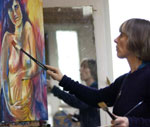 |
HANNEKE ROELOFSEN sculptress / art is about searching / the deciphering of the mystery / the mysterious character of art lies in the fact that art speaks what it simultaneously hides / while making it, there is the dance / the rhythm / the song of form and colour / something alive which is simultaneously present inside and outside of me / something that desires expression / and what comes into being are sculptures and paintings / figuratively filled with men / women / and stories sculptures: in bronze, concrete and wood; paintings: oil paint on canvas; projects: collaborating with groups; www.hannekeroelofsen.nl |
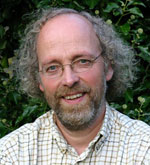 |
JAN SCHOTANUS (1950) Trained as a teacher with an additional degree in language (Dutch MO-A) he worked in primary schools in Fryslân. Soon he started translating books for children into Frisian, amongst which ‘Charlie and the Chocolate Factory’ by Roald Dahl. He has written several books, including ‘In swalker op ‘e kust’, ‘De kwestje fan Quad’ and ‘De ûnmooglike reis fan de Santa Maria’. He has also written (and produced, with his pupils) several plays for children, for instance ‘Frisia non kantat’. For sixteen years he has, together with his wife Marja, translated plays and musicals for the theatre, like ‘A Midsummer Night’s Dream’ and ‘Cabaret’. For three years he worked on StudioF, the new Frisian language course for primary schools. |
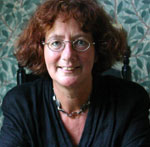 |
MARJA SCHOTANUS-POPMA (1953) For more than 20 years I was a hobby photographer of modern architecture, mainly in France, and had regular exhibitions in the Netherlands. But eight years ago I started my own text bureau and now I spend my time editing and correcting literature for writers and publishers and commercial texts for companies and advertising bureaus. I also write short stories and radio plays for children. With my husband I work on translations into Frisian of plays and well-known musicals, from Anateva to Zorbá, for the open air theatre of Jorwert. www.dattekstbureau.nl |
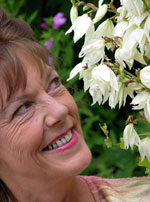 |
SIMY SEVENSTER (1944) Born in Wier, Fryslân. She was a nurse before she married and became a farmer’s wife and writer of drama, short stories, tv-scripts for ‘Baas boppe Baas’ (a Frisian soap), poems and lyrics, and the books ‘Wimerklaas en Swarte Pyt’ and ‘Út de Foarein’. She also paints on silk. |
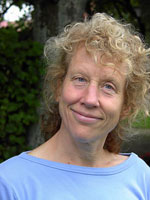 |
MONIQUE VERBRUGGEN After my early childhood in South Africa I moved to Amsterdam. There I came into contact with much art and culture – the theme of my life. After training at the dance academy my life was geared to dance. Through my many travels I came into contact with different people and cultures. In 1993 I began my one woman stained glass company in Kûbaard (Friesland). Dance and movement are still frequently recognizable in my own designs. Now that my work has made a small contribution to this book, my circle appears complete. |
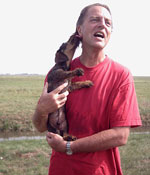 |
ROGER P. WIND (1950) He grew up in Arnhem. After grammar school he studied Theology in Kampen. With an initial specialization in Missiology he went to Edinburgh to study from 1973 to 1974. Back in the Netherlands he worked as a Pastoral Counsellor for the youth in Ermelo and graduated in 1980. In 1981 he published the book ‘Geloof in Wording’ (The Origin of Faith) about the development of identity in adolescents. In 1981 he was ordained as a minister of the Reformed Church of the Netherlands and became a psychiatric pastoral counsellor in Franeker. He is currently the coordinator of Spiritual Counselling for the Psychiatric Health Care Association (GGZ) in Sneek and Franeker, and he is a Supervisor and writes a column in the Friesch Dagblad (a Frisian newspaper). He likes running, travelling, classical music and red wine. |
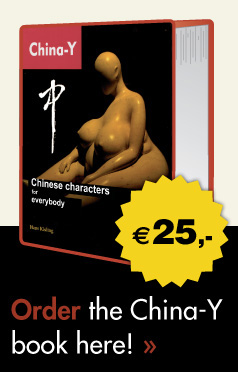
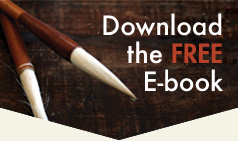
 sending...
sending...